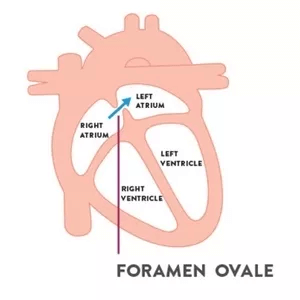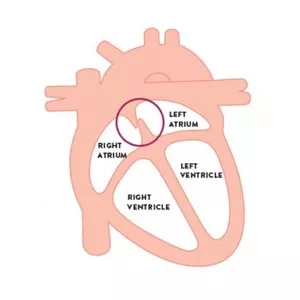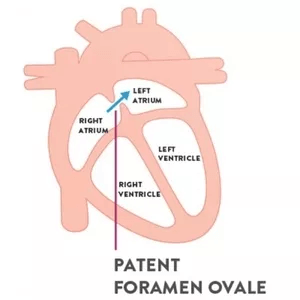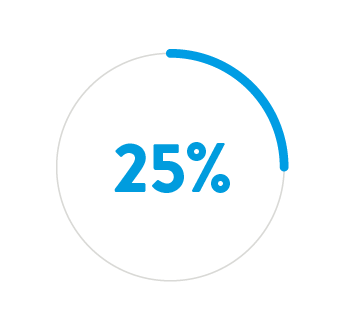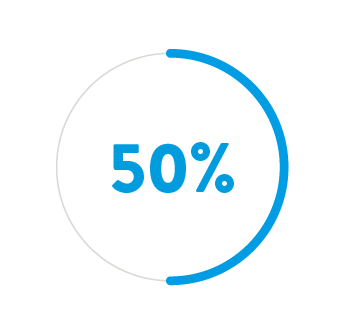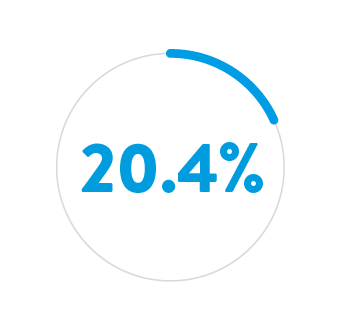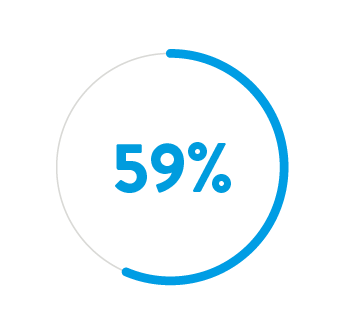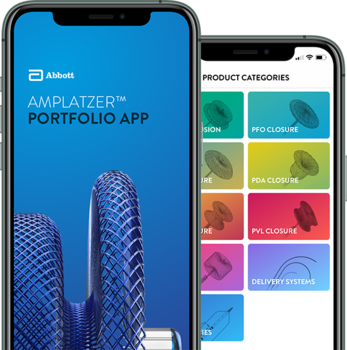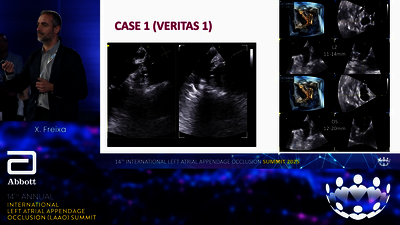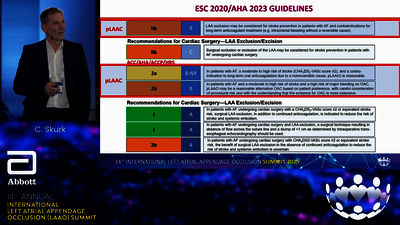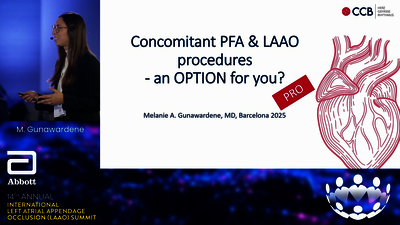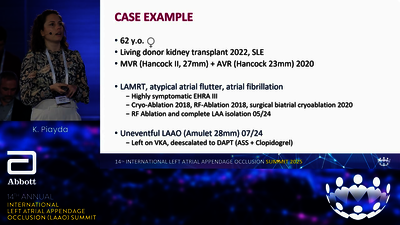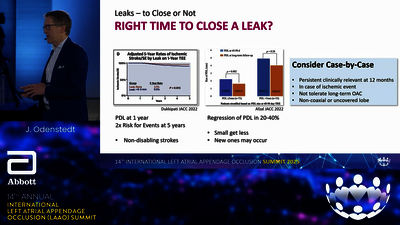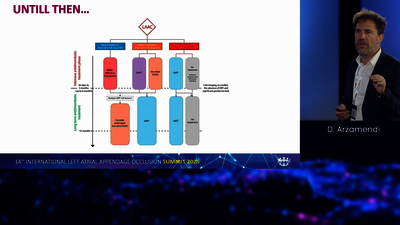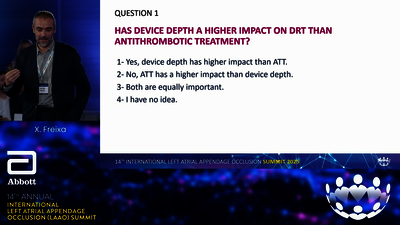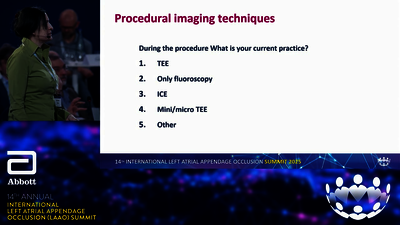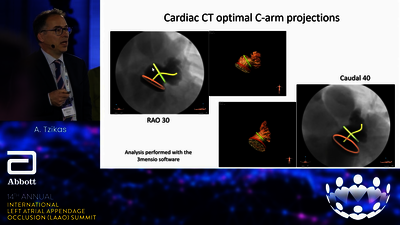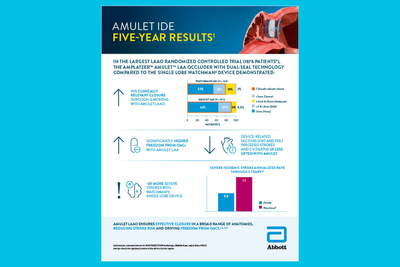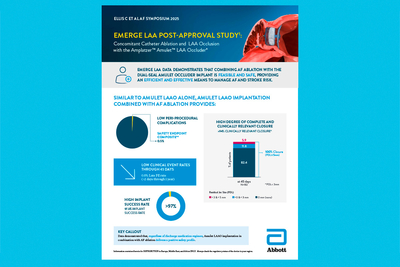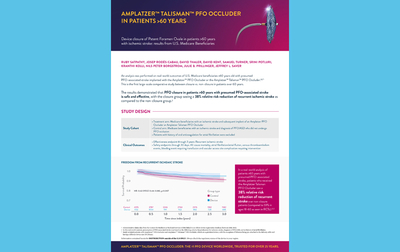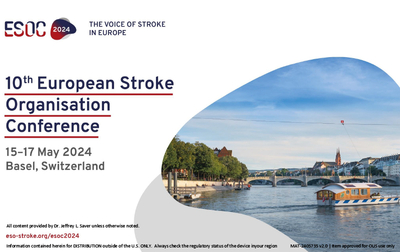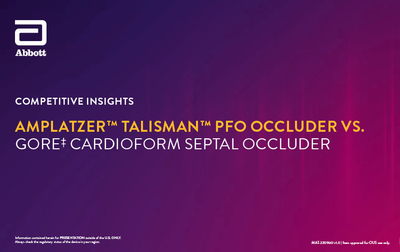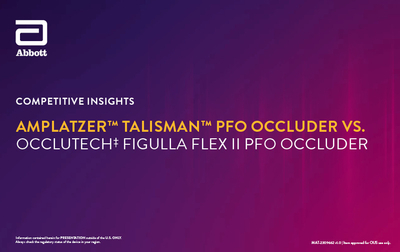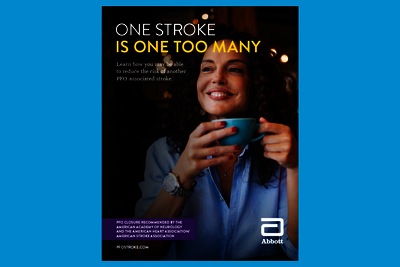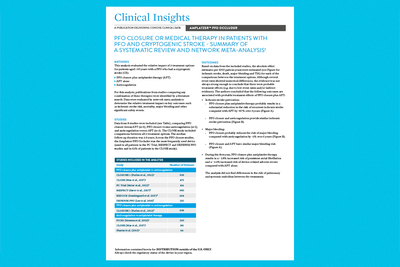Das patentierende Foramen ovale (PFO) ist ein embryonaler Defekt, der mit einem erhöhten Risiko für einen ischämischen Schlaganfall verbunden ist.1 Der Verschluss des PFO in Kombination mit einer langfristigen Thrombozytenaggregationshemmung wird empfohlen, um bei ausgewählten Patient:Innen einen erneuten Schlaganfall zu verhindern.2
OFFENES FORAMEN OVALE (PFO)
Ein offenes Foramen ovale (PFO) ist eine lappenförmige Öffnung zwischen den beiden oberen Herzkammern. Diese Öffnung lässt Blut von der rechten Herzseite auf die linke Seite fließen. Die Öffnung ist in der Embryonalen Phase wichtig, damit sauerstoffreiches Blut von der Mutter durch den Körper des Fötus zirkulieren kann.3
Nach der Geburt formt sich das PFO zum Septum, da der Blutfluss von rechts nach links nicht mehr benötigt wird. Das PFO bleibt jedoch bei ca. 25 % der Bevölkerung offen1, es hinterlässt einen Lappen oder Tunnel, der sich bei Druckveränderungen auf der rechten Herzseite öffnen und schließen kann.4
PFO-ASSOZIIERTER SCHLAGANFALL
Eine Gruppe von Experten hat darauf aufmerksam gemacht, dass neue Daten darauf hinweisen, dass die Klassifizierungsschemata für den ursächlichen Mechanismus bei Schlaganfall aktualisiert werden müssen. Angesichts der Überlegenheit des PFO-Verschlusses gegenüber der medikamentösen Behandlung ausgewählter Patienten:Innen sollte bei der Betrachtung der Ursachen eine neue Nomenklatur verwendet werden, und zwar "PFO-assoziierter Schlaganfall".8 Erfahren Sie mehr über die Gründe für die Änderung der Klassifizierung der Ursachen, indem Sie auf den unten stehenden Link klicken.
- Kent DM, Thaler DE. Is patent foramen ovale a modifiable risk factor for stroke recurrence? Stroke. 2010;41(10 Suppl):S26–30. doi.org/10.1161/STROKEAHA.110.595140.
- Messé SR, Gronseth GS, Kent DM, et al. Practice advisory update summary: patent foramen ovale and secondary stroke prevention. Neurology. 2020;94(20):876–885.
doi.org/10.1212/WNL.0000000000009443. - Homma S, Sacco RL. Patent foramen ovale and stroke. Circulation. 2005;112(7):1063–1072. doi.org/10.1161/CIRCULATIONAHA.104.524371.
- Mojadidi MK, Zaman MO, Elgendy IY, et. al. Cryptogenic stroke and patent foramen ovale. J Am Coll Cardiol. 2018;71(9):1035–1043.
doi.org/10.1016/j.jacc.2017.12.059. - Saver JL. Clinical practice. Cryptogenic stroke. N Engl J Med. 2016;374(21):2065–2074. doi.org/10.1056/NEJMcp1503946.
- Kernan WN, Ovbiagele B, Black HR, et al. AHA/ASA guidelines for the prevention of stroke in patients with stroke and transient ischemic attack. Stroke. 2014;45(7):2160–2236. doi.org/10.1161/STR.0000000000000024.
- Homma S, Sacco RL, Di Tullio MR, et al. Effect of medical treatment in stroke patients with patent foramen ovale: patent foramen ovale in cryptogenic stroke study. Circulation. 2002;105(22):2625–2631. doi.org/10.1161/01.CIR.0000017498.88393.44.
- Elgendy AY, Saver JL, Amin Z, et al. Proposal for updated nomenclature and classification of potential causative mechanism in patent foramen ovale-associated stroke. JAMA Neurol. 2020;77(7):878–886. doi.org/10.1001/jamaneurol.2020.0458.
- Pristipino C, Sievert H, D’Ascenzo F, et al. European position paper on the management of patients with patent foramen ovale. EuroIntervention.
2019;14(13):1389–1402. doi.org/10.4244/EIJ-D-18-00622. - Kernan WN, Ovbiagele B, Black HR, et al. Guidelines for the prevention of stroke in patients with stroke and transient ischemic attack. Stroke.
2014;45:2160–2236. doi.org/10.1161/STR.0000000000000024. - Diener H-C, Sacco RL, Easton JD, et al. Dabigatran for prevention of stroke after embolic stroke of undetermined source. N Engl J Med. 2019;380(20):1906–1917. doi.org/10.1056/NEJMoa1813959
- Saver JL, Carroll JD, Thaler DE, et al. Long-term outcomes of patent foramen ovale closure or medical therapy after stroke. N Engl J Med. 2017;377:1022–1032. doi.org/10.1056/NEJMoa1610057.
- Kasner SE, Rhodes JF, Andersen G, et al. Five-year outcomes of PFO closure or antiplatelet therapy for cryptogenic stroke. N Engl J Med. 2021;384(10):970–971. doi.org/10.1056/NEJMc2033779.
- Mas J-L, Derumeaux G, Guillon B, et al. Patent foramen ovale closure or anticoagulation vs. antiplatelets after stroke. N Engl J Med. 2017;377(11):1011–1021. doi.org/10.1056/NEJMoa1705915.
- Kavinsky CJ, Szerlip M, Goldsweig AM, et al. SCAI guidelines for the management of patent foramen ovale. JSCAI. 2022;1(4)100039. doi.org/10.1016/j.jscai.2022.100039.
- Kleindorfer DO, Towfighi A, Chaturvedi S, et al. 2021 Guideline for the prevention of stroke in patients with stroke and transient ischemic attack: a guideline from the American Heart Association/American Stroke Association. Stroke. 2021;52(7):e364–e467. doi.org/10.1161/STR.0000000000000375.
- Diener H-C, Akagi T, Durongpisitkul K, et al. Closure of the patent foramen ovale in patients with embolic stroke of undetermined source: a clinical expert opinion and consensus statement for the Asian-Pacific region. Int J Stroke. 2020;15(9):937–944. doi.org/10.1177/1747493020941658.
- The Japan Stroke Society, The Japanese Circulation Society, and Japanese Association of Cardiovascular Intervention and Therapeutics Guidance on Percutaneous Closure of Patent Foramen Ovale (PFO) in Cryptogenic Stroke Patients. pfo-council.jp/publications/ (accessed April 2023).
- Diener H-C, Grau A, Baldus S. Cryptogenic stroke and patent foramen ovale (abridged and translated version). Neurol Res Pract. 2019;1(1):1–10.
doi.org/10.1186/s42466-019-0008-2. - Kuijpers T, Spencer FA, Siemieniuk RAC, et. al. Patent foramen ovale closure, antiplatelet therapy or anticoagulation therapy alone for management of cryptogenic stroke? A clinical practice guideline. BMJ. 2018;362:k2515. doi.org/10.1136/bmj.k2515.
- Wein T, Lindsay MP, Côté R, et. al. Canadian stroke best practice recommendations: secondary prevention of stroke, sixth edition practice guidelines, update 2017. Int J Stroke. 2018;13(4):420–443. doi.org/10.1177/1747493017743062.
